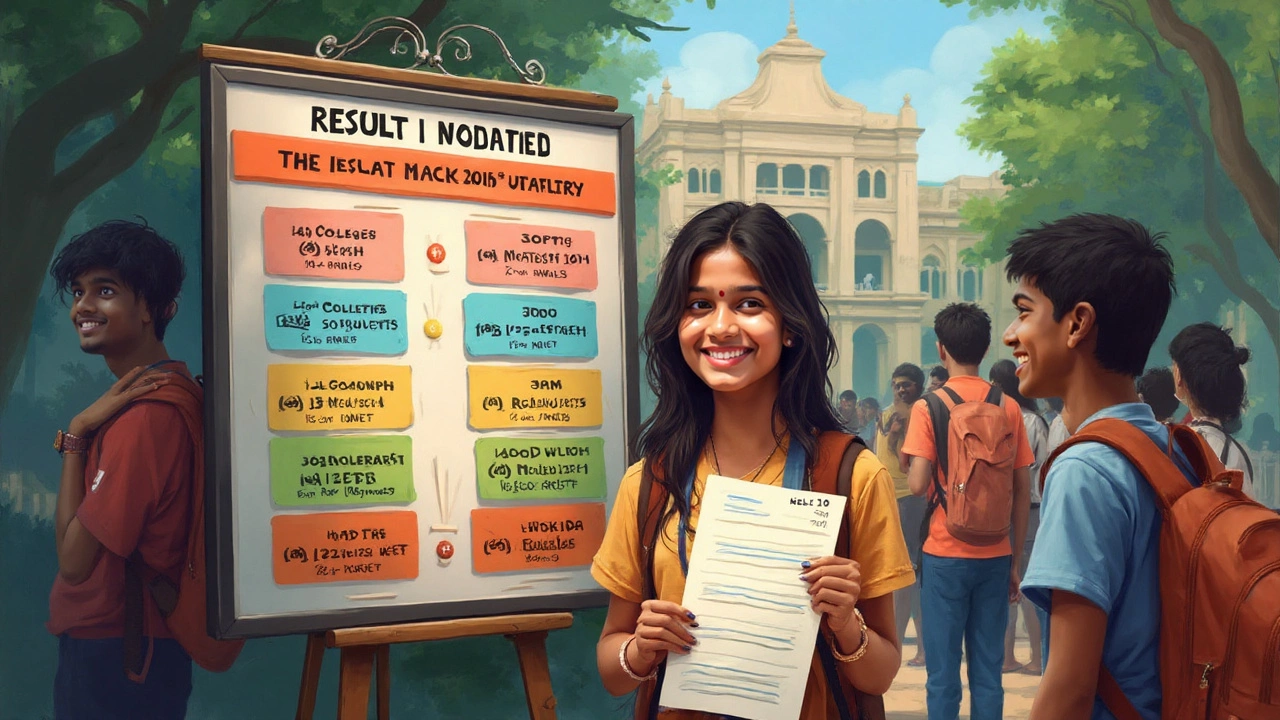India’s medical dream isn’t for the faint of heart. Every year, close to 2.4 million students sign up for the NEET exam hoping for a shot at MBBS or BDS. That’s a full house at the world’s largest stadium, four times over—all aiming for barely 110,000 seats. Here’s the kicker: only about 55,000 of those are MBBS government college seats. So, when people ask, “Which NEET rank is best?”—the real answer is less about a magic number and more about understanding what those precious ranks actually mean for your future.
Understanding NEET Rank and Why It Matters So Much
Here’s something even toppers might not know offhand: NEET isn’t just about cracking an entrance—your rank shapes your possibilities for years ahead. There’s All India Rank (AIR), state rank, and category rank. The best NEET rank is the one that opens the doors you want. All India Rank is what colleges look at for 15% of 'All India Quota' seats, while state rank matters more if you want to stay local and claim a seat under the 85% State Quota. Let’s make it clear: a spectacular rank isn’t automatically a golden ticket everywhere, but it sure opens more and better doors.
For NEET 2024, a score above 705 (out of 720) bagged the top 5 AIRs. But to land a seat in AIIMS Delhi or Maulana Azad, you’d typically need to rank inside the top 50 (think 715+ marks). For elite state colleges, a rank under 1000 is usually enough, but it depends on your category and state. This means there’s no one-size-fits-all answer, but understanding the pattern gives you enormous clarity.
If you’re aiming for government MBBS seats in a general category, a safe zone is a rank under 15,000. For reserved categories (OBC, SC, ST), cut-off ranks stretch further—sometimes 30,000 or even 60,000, depending on state and category.
This isn’t just trivia—it’s strategy. Too many miss out because they underestimate how competitive the process gets as you go down the rank list. Every single digit can make a difference. For example, the difference between rank 9000 and 12000 can easily decide whether you get a seat in a top-tier government college or end up paying lakhs in a private one.
NEET Cut-Offs and How Ranks Translate Into Seats
Tired of vague advice? Here’s some real data. The NEET cut-off is basically the minimum score or rank you need for a seat in a particular category at a specific college. But these change every year, depending on the number of applicants, difficulty of the exam, and how many bright minds are in the running. Let’s look at actual numbers from NEET 2024, because theory is useless without proof.
| College | General Category Closing Rank (2024) | OBC Closing Rank | SC Closing Rank | ST Closing Rank |
|---|---|---|---|---|
| AIIMS Delhi | 53 | 239 | 1055 | 7836 |
| Maulana Azad Medical College | 89 | 507 | 6695 | 15354 |
| VMMC, Delhi | 159 | 847 | 7341 | 17249 |
| CMC Vellore (Private) | 639 | 1290 | 20531 | 36657 |
| Government Medical College, Mumbai | 770 | 2078 | 28411 | 48988 |
Notice how the cut-off ranks for top government colleges are shockingly low for General and much higher for reserved categories? It’s even wilder at the state level because every state quota has its own set of rules and closing ranks. Maharashtra, for instance, had government seats closing around AIR 38,000 for OBC and 60,000 for SC in 2024, while in Delhi, the cut-off was way tighter. States like Tamil Nadu and Rajasthan see high closing ranks owing to more seats and local advantage.
Private colleges have looser cut-offs—sometimes up to AIR 4,00,000—but the fees can be 15-20 lakh per year. Deemed universities go even higher, but for most, the main game ends at a government seat. Here’s a solid tip: Once you’re above 75,000 rank, MBBS chances at government colleges nosedive, unless you’re under a strong reservation category or have state quota on your side. DNB and BDS options remain, but they’re not in the same demand as core MBBS seats.

What Rank Should You Aim For? Clear Goals, Realistic Targets
You’ve seen the numbers; now, here’s how you make them work for you. Set your goals by asking: Which college do I want? What’s my category and home state? For top government colleges like AIIMS or KEM Mumbai, you’ll need a rank better than 1000 for General category, under 4000 for OBC, and under 30,000 for SC/ST. For a decent government medical seat anywhere in the country, General category students should target a rank better than 15,000. If you’re OBC, stretching to 28,000 still puts you in the game. For SC and ST, ranks up to 45,000-65,000 might get you a seat—if you stay sharp about state lists and quotas.
If you’re counting on BDS (dental) seats, the margin is slightly better—ranks up to 1,20,000 make the cut in some states. But don’t bank on miracles. Every year, the numbers jump: in just one year between 2023 and 2024, the top 1000 scored 696+ compared to 685+ the previous year. The bar keeps creeping higher because each exam batch gets tougher and more determined. You can’t just aim to “clear NEET”—you have to outrun not just your old self, but lakhs of equally desperate aspirants.
Want the best shot? Here are focused strategies:
- Push your practice scores at least 40-50 marks above the previous year’s cut-off for your category.
- Target consistency, not just peak performance. One bad subject section or negative marking can drop your rank by thousands.
- Prioritize NCERT for 80% of questions. Toppers swear by solving at least 30 full-length NEET mock papers under strict time.
- Track last 3-4 years’ state-wise closing ranks (available on MCC or state counseling websites) and make a personal goal chart.
- Don’t neglect state quotas. If you have a domicile advantage, use it smartly during choice filling in counseling rounds.
Stories, Stats, and Tips from Real NEET Aspirants
If stats motivate you, check out this case: Last year, Pranav from Ahmedabad missed an MBBS seat at BJ Medical by just 18 ranks—he’d scored 676/720. If he’d marked three more Biology questions right, he’d have saved a year and lakhs in private tuition fees. On the other hand, Priya, SC category from Tamil Nadu, landed an MBBS seat at a top government college with an AIR of 48,276 thanks to a home state quota. Both gave their best, yet their outcomes depended entirely on their target ranks, category, and state strategy.
Here are a few high-utility hacks from recent NEET toppers:
- Plan for at least a 10-15 mark “safety cushion” over anticipated cut-offs—don’t bet on variable paper difficulty.
- Follow MCC and your state counseling portals obsessively after results. One update can change your entire road map.
- Have backup options. Rank isn’t just about MBBS/BDS—you can chalk out BAMS, BHMS, or other paramedical degrees if there’s a hiccup.
- Always double-check category choices and documentation; so many lose their top seat for a missing certificate.
- Connect with real students from your target college via social media. They can share last-minute trends and hidden perks about certain campuses.
Let’s face it, the best NEET rank depends not just on marks but on knowing how the system works and using it to your advantage. Smart preparation, strategic counseling, and a realistic target—master these, and you won’t just clear NEET, you’ll ace it.

